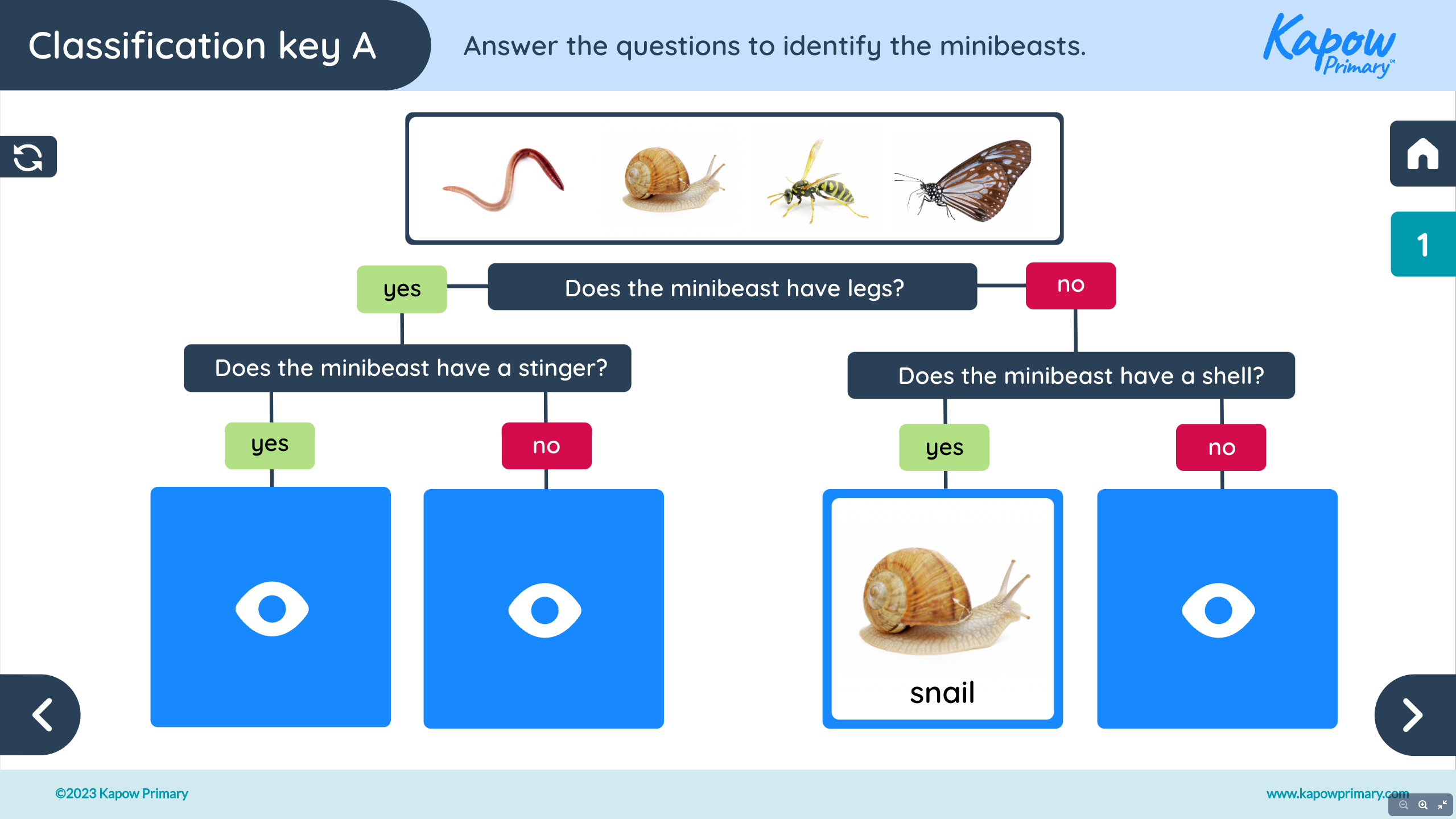Learning objective
Working scientifically
- To recognise how scientists answer questions.
Success criteria
Working scientifically
- I can recognise that scientists choose the
This content is for subscribers only. Join for access today.
National curriculum
Science
Living things and
This content is for subscribers only. Join for access today.
Cross-curricular links
English (Year 1)
Reading
This content is for subscribers only. Join for access today.
Before the lesson
This content is for subscribers only. Join for access today.
Lesson plan
Recap and recall
Recap Lesson 1: Identifying and classifying minibeasts, in which the children classified minibeasts according to criteria (e.g. can fly/cannot fly, pattern/no pattern). Display the Presentation: Sorting animals and ask pairs to discuss possible criteria for sorting the animals into two groups.
This content is for subscribers only. Join for access today.
Extended-mode explainer videos
How to extend your display to view the lesson page and preseantion mode simultaneously. Choose your operating system below to watch the video
If you need further support with extending your display,
please contact [email protected].
Extended-mode explainer video: For Mac
Extended-mode explainer video: For Windows
Adaptive teaching
Pupils needing extra support
Should have the Resource: Earthworms read to them before the lesson; should be responsible for reading captions and labels when reading the fact sheet with a partner.
Pupils working at greater depth
Should return to the questions written on whiteboards and write the answers after reading the Resource: Earthworms; should be encouraged to give reasons for their predictions about the wormery (for example, I think the worms will mix the sand and soil up because worms burrow and create lots of tunnels).
This content is for subscribers only. Join for access today.
Assessing progress and understanding
Pupils with secure understanding indicated by: asking suitable questions about worms; recognising
This content is for subscribers only. Join for access today.
Vocabulary definitions
-
criteria
Characteristics used to sort things into groups.
-
microhabitat
A small area with different conditions to the surrounding habitat.
This content is for subscribers only. Join for access today.
In this unit
Assessment - Science Y2: Microhabitats
Lesson 1: Identifying and classifying minibeasts
Lesson 2: Introduction to scientific enquiry
Lesson 3: Minibeast hunt
Lesson 4: Planning an experiment
Lesson 5: Woodlice experiment
Lesson 6: What is a botanist?





